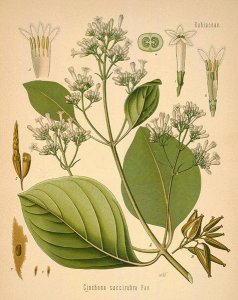Tutorial 2 – Law of Similars Discovered
This is a copy & Paste directly from: https://homeopathyplus.com/tutorial-2-law-of-similars-discovered/
Homeopathy was born at a time when the practice of medicine was unregulated and dangerous. Those  who had the misfortune to fall ill ran the risk of being dosed with toxic mixtures of lead, mercury and arsenic or being plastered with leeches. Blood-letting, purging and blistering were standard practices. For many, the cure was worse than the complaint, and they died from the treatments they received rather than the disease itself.
who had the misfortune to fall ill ran the risk of being dosed with toxic mixtures of lead, mercury and arsenic or being plastered with leeches. Blood-letting, purging and blistering were standard practices. For many, the cure was worse than the complaint, and they died from the treatments they received rather than the disease itself.
It was in this milieu that Samuel Hahnemann (1755-1843), the founder of homeopathy, began his study of medicine. After graduating from the University of Erlangen in 1781 he established a practice as a doctor. His writings from this period show that he became increasingly disillusioned by the medical practices of the day. Concerned about harming those who came to him for help and unable to relieve the suffering of his own sick children, Hahnemann gave up the practice of medicine in 1790.
The Cinchona Experiment
In the following years, Hahnemann chose to support his family by chemical studies and the translation of foreign medical texts into his native German language. One day, while translating a text about Cinchona Bark (from which we derive Quinine), Hahnemann conducted an experiment that was to change the course of his life. The text argued that Cinchona was effective in the treatment of malaria because it was bitter and astringent. Hahnemann knew this wasn’t logical; other medicines had the same properties but they did not help malaria. Why, he questioned, was Cinchona Bark effective when others weren’t?
In an experiment that spearheaded Homeopathy’s introduction into the world, Hahnemann decided to test Cinchona bark on himself. Shortly after taking the first dose he became ill with symptoms similar to those of malaria. He experienced fever, thirst, drowsiness,palpitations, anxiety, and muscle and joint pain. Each time he repeated the dose, the same thing happened.
Hahnemann wondered from this experiment if Cinchona bark could treat malaria, not because it was bitter and astringent, but because it could produce malaria-like symptoms in healthy people. The implications of this, if shown to be true in other substances, were startling; suffering humanity would finally have a way of knowing what each medicine could reliably treat. Over the coming years Hahnemann tested his suspicions by conducting more experiments on himself and others with many different substances. In each instance, they produced symptoms in the healthy similar to those they could treat in the unwell.
Birth of Homeopathy
Six years were to pass from that first Cinchona experiment before Hahnemann had enough evidence to release his findings to the scientific and medical community of the day. In a landmark essay he explained the Law of Similars phenomenon and demonstrated its action in many substances. The concept of “like treats like”, noted since the time of Hippocrates, had finally been validated. The year was 1796 and to this day is considered the birth year of homeopathy.
China officinalis (Cinchona bark) – What Does it Treat?
China is the name of the homeopathic medicine used in that first experiment by Samuel Hahnemann. Originally known as Cinchona (or Peruvian) bark, it now has the Latin name of China officinalis. The physical symptoms that Hahnemann experienced after taking a dose of China were: cold feet and finger tips; drowsiness; palpitations; quick hard pulse; intolerable anxiety and trembling; weakness in all limbs; unpleasant sensation in the periosteum of bones; rigidity of joints;pulsation in the head; redness of cheeks; fever; and thirst. These symptoms are very similar to those experienced by malaria sufferers and act as a guide to the symptoms China can treat.
Repeat testing of China by Hahnemann and other volunteers has shown that it is also useful for: complaints arising from loss of body fluids; symptoms that reoccur every two or seven days; symptoms that are worse for light pressure but relieved by strong pressure; autumn asthma; types of gallbladder disease and colic; flatulence with bloating; insomnia from elated thoughts; and fear of animals.
Within clinics, homeopaths have further observed that the mental and emotional symptoms of: irritability; easy offence or paranoia; mood swings; and, poetic or artistic abilities; grandiose thoughts and imaginings prior to going to sleep that then seem foolish in the morning, often occur in tandem with the physical complaints associated with China. As a result it is a remedy frequently prescribed for moody, sensitive, and idealistic people. Teenagers are particularly prone to this type of imbalance. Treatment by China for these mental, emotional, and physical symptoms returns the sufferer to health.
